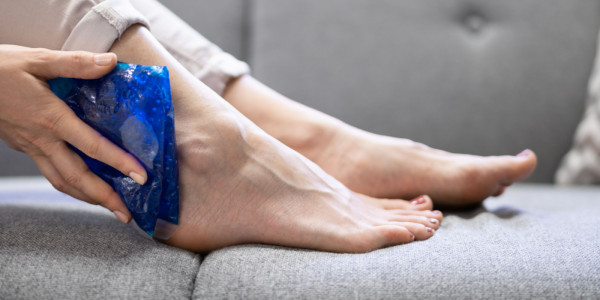
United States, 4th Nov 2023, King NewsWire – Sports injuries are an unfortunate but common occurrence in the world of athletics. Whether you’re a professional athlete or a weekend warrior, the risk of injury is always present. When injuries happen, it’s essential to have a clear and effective plan for treatment and recovery. One such approach that has stood the test of time is R.I.C.E., an acronym that stands for Rest, Ice, Compression, and Elevation. In this article, we will delve into what R.I.C.E. is and how it can be an invaluable tool in the treatment of sports injuries.
Rest
Rest is the first and foremost component of the R.I.C.E. protocol. When you sustain a sports injury, it’s essential to give your body time to heal. Resting doesn’t necessarily mean complete immobility; it means avoiding activities that exacerbate the injury. This might involve taking a break from the sport or modifying your training routine to reduce strain on the injured area.
Rest allows your body to divert its energy and resources towards the healing process. When you rest, you minimize the risk of further damage, inflammation, and pain associated with the injury. It’s crucial to listen to your body and not rush back into strenuous activities prematurely. Pushing through an injury can lead to more severe consequences, prolonged recovery times, or even chronic conditions.
Ice
Ice therapy, or cryotherapy, is the second component of the R.I.C.E. protocol. Applying ice to an injured area can help reduce swelling, alleviate pain, and promote healing. Cold therapy works by constricting blood vessels, which reduces blood flow to the injured area and subsequently decreases swelling. Additionally, ice can numb the area, providing immediate pain relief.
When using ice, it’s essential to do so safely. Never apply ice directly to the skin, as it can cause frostbite. Instead, use a cloth or towel as a barrier between the ice and your skin. Apply the ice for about 15-20 minutes at a time, allowing your skin to warm up between applications. Repeat this process several times a day during the initial 48-72 hours following the injury.
Compression
Compression is the “C” in R.I.C.E., and it involves the use of compression bandages or wraps to support the injured area. Compression helps reduce swelling by preventing the accumulation of fluid in the injured tissues. It also provides some stability to the injured joint or muscle, which can help alleviate pain and promote faster healing.
When applying compression, be cautious not to wrap the bandage too tightly, as this can restrict blood flow and cause additional problems. You should be able to slide a finger under the bandage comfortably. If you experience numbness, tingling, or increased pain, loosen the compression immediately.
Compression garments, such as sleeves or braces, are also available and can be beneficial for certain injuries. They provide consistent compression and can be worn throughout the day to support the injured area.
Elevation
The final component of R.I.C.E. is elevation. Elevating the injured limb or body part above the level of your heart can help reduce swelling by facilitating the drainage of excess fluid. Elevation works in conjunction with the other components of R.I.C.E. to promote a faster and more comfortable recovery.
To effectively elevate an injured limb, prop it up on pillows or cushions while keeping it comfortably elevated. For example, if you have a sprained ankle, lie down and prop your foot up on several pillows to ensure it is higher than your heart. This position encourages fluid to flow away from the injured area, reducing swelling and discomfort.
Conclusion
In the world of sports, injuries are an unfortunate reality. However, by following the R.I.C.E. protocol, athletes and active individuals can significantly improve their chances of a swift and successful recovery. Rest, Ice, Compression, and Elevation are not mere guidelines; they are a time-tested approach to managing sports injuries.
Remember that not all injuries are the same, and the severity and type of injury will determine the extent to which you should apply the R.I.C.E. protocol. In some cases, it may be necessary to seek medical attention for a proper diagnosis and treatment plan. Always consult with a healthcare professional if you are unsure about the nature or severity of your injury.
Ultimately, R.I.C.E. serves as a valuable tool in your arsenal for sports injury treatment. By following these principles, you can take proactive steps to minimize pain, reduce swelling, and expedite the healing process, allowing you to get back in the game stronger and healthier.
This blog article is for general information purposes only and should not be considered medical advice. If you have any medical issues or questions, consult your physician.
Your premier Orthopedic Surgeon Lubbock, Sports Medicine Lubbock doctor, specializes in minimally invasive procedures and has experience with arthroscopic and reconstructive surgery of the shoulder, ACL, shoulder, knee, and elbow, emphasizing cutting-edge orthopedic methods. Follow us on Facebook and Twitter.
Media Contact
Organization: Dr. Kevin Crawford, Sports Medicine Doctor
Contact Person: Dr. Kevin Crawford
Website: https://lubbocksportsmed.com/lubbock-sports-doctors/dr-kevin-crawford/
Email: [email protected]
Country: United States
Release Id: 0411237529
The post R.I.C.E. in Sports Injury Treatment: The Road to Recovery appeared first on King NewsWire. It is provided by a third-party content provider. King Newswire makes no warranties or representations in connection with it.
Disclaimer: The views, suggestions, and opinions expressed here are the sole responsibility of the experts. No Sahyadri Times journalist was involved in the writing and production of this article.
